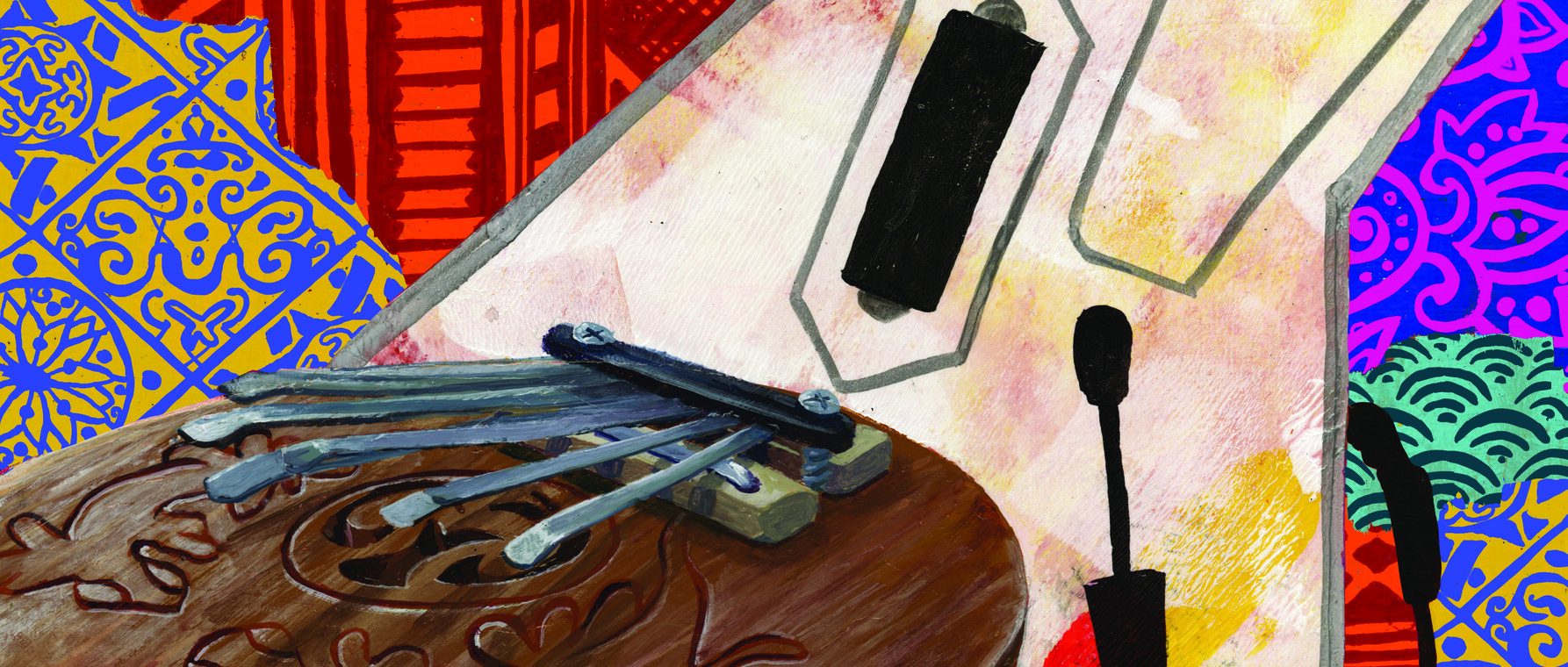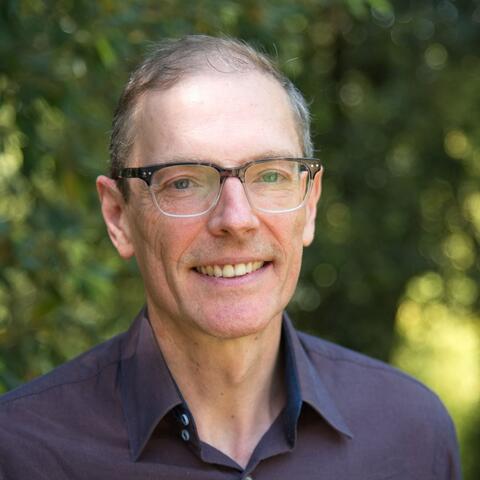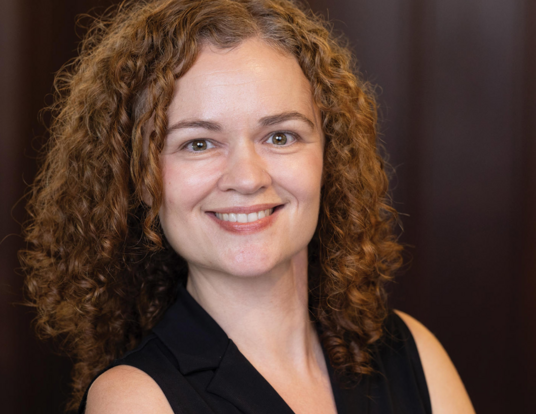Field Work: Remixed
From the living room to the Cuban drag scene, today's ethnomusicologists see no borders.

Ewedihalew, yene konjo, ewedihalew
yene fikir fikir fikir, yene fikir fikir fikir
That lilting verse, though written in Amharic, would be familiar to the millions of American fans of the Canadian Grammy-winning R&B artist The Weeknd. Sung by a female chorus woven into the ending of his hit “The Hills,” The Weeknd (né Abel Makkonen Tesfaye) echoes a song inherited from his Ethiopian grandmother, who raised him. The Weeknd’s music also piques the scholarly interest of Kay Kaufman Shelemay, G. Gordon Watts Professor of Music and professor of African and African American studies at Harvard University, who is a strong voice for the ever-growing timeliness and vast potential of her field, ethnomusicology. For ethnomusicologists like Shelemay, who conducted fieldwork in Ethiopia for decades and now studies the Ethiopian diaspora, this poignant, globally spiced song is part of a vast musical lexicon reflecting the reach of contemporary ethnomusicology.
All Over the Map
The dictionary definition of ethnomusicology is sparse: The study of the music of different cultures, especially non-Western ones. But that description, and a persistent stereotype that the discipline exists at the margins of music scholarship, is overdue for a dusting-off. With its marriage of both quantitative and qualitative research, it has gained gravitas far beyond its predecessor comparative musicology, the study of indigenous music that gave way to ethnomusicology in the 1950s. According to the Society of Ethnomusicology, the field embraces the study of music in its cultural context, and in that sense the possibilities are limitless. “Ethnomusicologists,” its definition reads, “approach music as a social process in order to understand not only what music is but why it is: what music means to its practitioners and audiences, and how those meanings are conveyed.”
Talk to Shelemay about her current and former graduate students, and it becomes clear that the highly interdisciplinary, far-reaching scholarly pursuits of her students and colleagues are in many ways an examination, through the lens of music, of today’s shrinking, wired world. Roam the seminar rooms of a major conference on ethnomusicology and, yes, one is likely to encounter fascinating scholarly considerations of Bulgaria’s Koprivshtitsa Festival or the marginalization of Manganiyar troubadours in Rajasthan. But these days one is just as likely to happen on presentations exploring the digital soundtrack of Grand Theft Auto, air guitar competitions, or the confluence of music, dance, and politics in Cuban drag shows. A sampling of papers published in the last few years by the Society’s Journal of Ethnomusicology are, in every sense, all over the map: “Street Queens: New Orleans Brass Bands and the Problem of Intersectionality,” “Violence and Martyrdom in Modern Irish Republican Ballads,” and “Listening to the World but Hearing Ourselves: Hybridity and Perceptions of Authenticity in World Music.”
“Ethnomusicologists today study everything, everywhere,” says Shelemay, a scholar of a range of cultural migrations. “We do everything from hip-hop to art music, we study music at home and abroad, we study the urban and the rural. We’ve blurred the boundaries between ethnomusicology and disciplines from anthropology to sociology to performance studies, but also increasingly the sciences.” Ethnomusicology, to Shelemay, is a scholarly examination of lives—of life itself—through the lens of music and often dance.
From the Sacred Harp to Guitar Hero
Globalization and the ubiquity of digital media have transformed the making and consumption of music. And even as many of its researchers fan out to the world’s far-flung corners, there are those, like Kiri M. Miller, PhD ’05, who stay closer to home. Now a professor at Brown University, Miller has published studies of the video game phenomenon Guitar Hero, the base of her rigorous fieldwork confined largely to her living room. A former student of Shelemay, she learned in her Harvard studies that creativity among ethnomusicologists is boundless, as is their desire to cross disciplines beyond the field’s natural connections with anthropology and history. Ethnomusicology now entails an ever-widening range of seemingly unlikely academic bedfellows, interweaving everything from medicine to economics to neuroscience. Musicology was thought “to represent non-Western music and to some extent that’s true,” says Miller. “It’s been representative of diversity and has served to check a box in the curriculum.”
No longer. Who are ethnomusicologists? They are musicians, cultural anthropologists, folklorists, scholars of dance, performance, social scientists, and those specializing in gender, race, or ethnic studies. Their shared foundation is, as the Society’s website says, to “understand music as a social practice, they explore historical context, and they do fieldwork that often comprises performance and theory as well as traditional observation.”
For Miller, studying video games was a natural progression from her thesis on communities of participatory sacred harp singing. “I was always interested in participatory amateur music-making and that can span a huge gamut, including folk revival and singing practice,” says Miller, author of several books including Playing Along: Digital Games, YouTube, and Virtual Performance. “It’s not such a huge gap between that and Guitar Hero. I think that there are these stereotypes, that you have to study something in a faraway location. But at the core, we are studying living people in the practice of music making, and in that sense there’s nothing new about what I do; it’s that media formats have changed,” she explains. “It is somewhat uncommon in the field to do web-based ethnography. But what I do in terms of popular music topics is not very new at all.” Fieldwork is the heart of ethnomusicology, but Miller’s “field” is a virtual one. “I try to get access to as many different points in the circulation chain, from the designer end to players, audience members, and people posting comments,” she says. “It’s a challenge when there are 100 million people doing those things.” To get what she needs, she posts links to her surveys on player forums and sometimes follows up with online interviews.
She came to Guitar Hero without having ever played conventional guitar. “It gave me a different relationship to the music,” especially the drum and guitar parts in popular music, she says. “It changed the way I listened.” One of the things that might seem counterintuitive to people, says Miller, is how much her Guitar Hero research had in common with her work on singing traditions where participants across the country sing from the same book of songs. Guitar Hero, too, is “a common visceral experience offering a sense of connection, with people that they haven’t met before.”
Unexpected Preservation
In recent years, one compelling realm to ethnomusicologists is the political sphere. Civil wars, popular protest movements, forced and voluntary migrations, and terrorism affect and reshape the lives of millions whether in their native countries or among the diaspora. And music, so fundamental to culture and its perpetuation, reflects these pressures, Shelemay notes. “These are tough times,” for music as well as for the people whose lives it pervades. At a recent conference, for example, a keynote lecture focused on the destruction of music in Baghdad. “The dimensions of loss are huge, with archives totally pulverized by our bombs,” says Shelemay. “So not all of our work is celebratory.”
Echoing Miller, Shelemay speaks of ethnomusicology as being about social engagement. “All of our projects run the gamut,” she says. What she calls “salvage ethnomusicology” is not really a goal. “But I must tell you there are moments where most of us find we have preserved something we haven’t set out to preserve, and I surely didn’t do it as preservation.” To illustrate her point, Shelemay describes her work with a Syrian Jewish community in New York that transmits (and keeps alive) Arab musical tradition. “They came from Aleppo, and now Aleppo is gone,” she says. “All of a sudden the music has a whole other dimension that I never considered.”
Blurring the Lines of Inquiry
For Matthew Leslie Santana, whose PhD dissertation in progress is titled “Transformismo: Race, Drag Performance, and Sexual Revolution in Contemporary Cuba,” ethnomusicology enfolds urgent issues of race, politics, and gender identity. Santana arrived in Cuba in May 2017 and will remain there through June. His fieldwork involves interviews with drag performers and audience members, participant observation in queer nightlife, as well as historical research. Santana says he has always been interested in “racial, economic, and sexual justice, and invested in putting these front and center” in his work as an ethnomusicologist. “After several short preliminary trips to Cuba,” says Santana, “I felt that the drag performance scene was an ideal site within which to consider the questions that were most important to me.”
Santana is a concert violinist and this, he says, also informs his work. “I often feel that the only thing that really connects music scholars is that most of us were at one point or another performers,” he explains. “As a violinist, I am sensitive to and aware of the music of the event, the affective content of the performance, and the utility of a performer’s movements.” And his own performance background helps him empathize with his interlocutors, he says, “when they underscore that for them performance is, in the end, a job.”
Santana meets most of his interview subjects at shows where they are performing, and performers have generally been very open to being interviewed. He is also a participant observer, which means going to shows and having conversations with other audience members. And his research inevitably entails living in Cuba and dealing with, he says, “the usual challenges—shortages, vexing transportation, bureaucracy.” This blurring of lines of inquiry, and focusing on his own experience, is a compelling example of what ethnomusicology means. Unlike disciplines that strain to keep observers at a clinical distance, participation is an important element of ethnomusicological inquiry.
In fact, Santana’s research is as enlightening to Cubans as it is to his fellow scholars at home. “One scene my work focuses on is Cuba’s nascent drag king movement. While drag queen performance is widely practiced in Cuba, and most people I speak to understand what it is, drag king performance is still novel, and many are not aware of its existence,” he shares. “The people at the helm of this movement in Havana are working-class, Afro-descendant, lesbian women, and they have been working hard to overcome the obstacles preventing them from participating in the art world of drag performance. Their struggles illuminate drag performance as a male-dominated sphere, and they are trying to redress this.”
And, like Miller’s powerful connection to the gamers in online forums and Shelemay’s immersion into immigrant communities, Santana’s work has led him in unexpected directions. Where it leads, he follows: “One recent Friday, my partner and I were getting ready to head to an afternoon performance of two drag king friends who are a couple,” he explains. “Before we could leave, we received a call from one of them telling us that her partner’s father—whom they had been taking care of as he suffered from dementia—had passed away.” Santana and his partner made the long journey to the funeral home to pay their respects. The next morning, he played a short piece on the violin while his friend’s father was buried. “I learned a ton that night and the following morning about Cuban culture around, and state management of, death,” he says. “These kinds of quotidian experiences that fill in the social lives of performers are central to my work.”
Honoring Community
Though Santana says his project is very much a traditional ethnomusicological one in that he’s spending a year immersed in a culture of performers, what is relatively new for the field is its growing focus on social justice and activism, a central theme in Shelemay’s work as well. “What I love most about my work,” adds Santana, “is the opportunity it gives me to sit and listen to marginalized people who are trying to survive in an unjust global order.”
“When you study communities, you honor them,” says Shelemay. And more and more, that entails studying trauma, environmental destruction, and conflict. “Music,” she says, “opens a window on just about anything you want to study.”
Illustration by Gina & Matt
Get the Latest Updates
Join Our Newsletter
Subscribe to Colloquy Podcast
Simplecast




